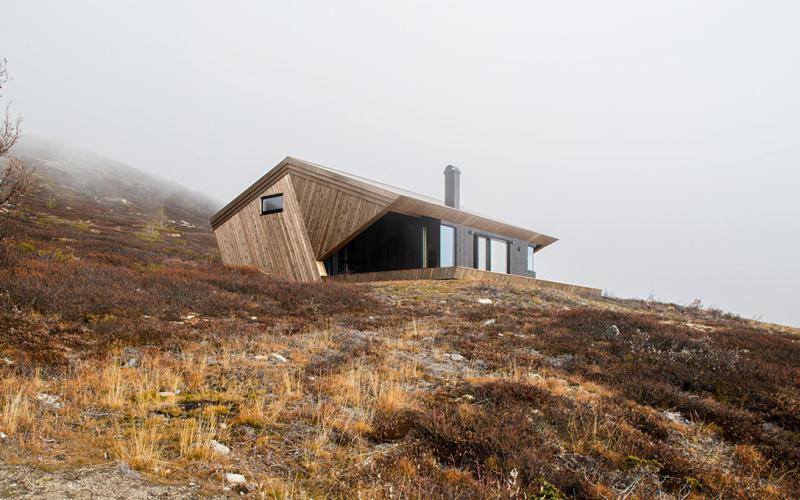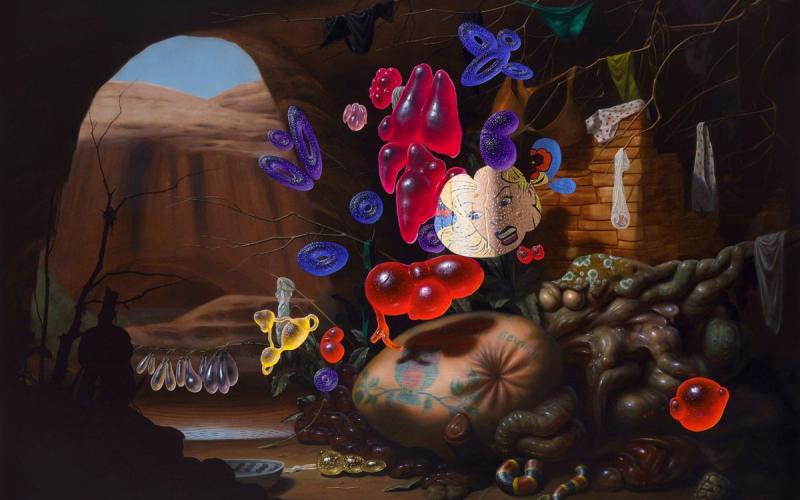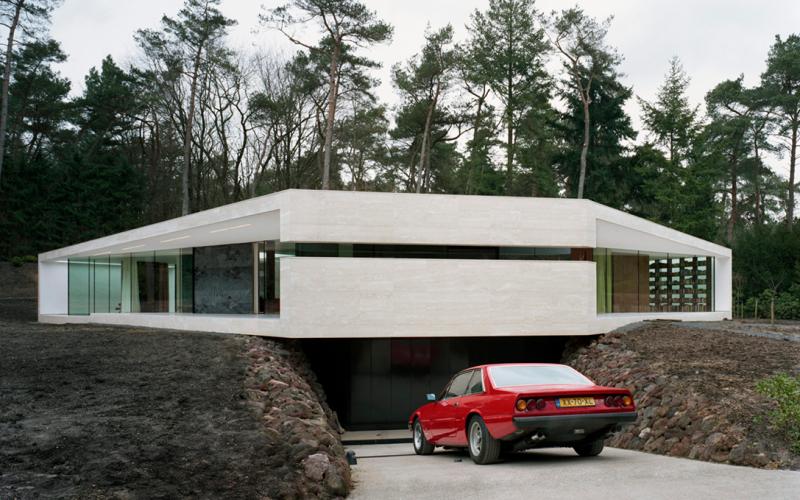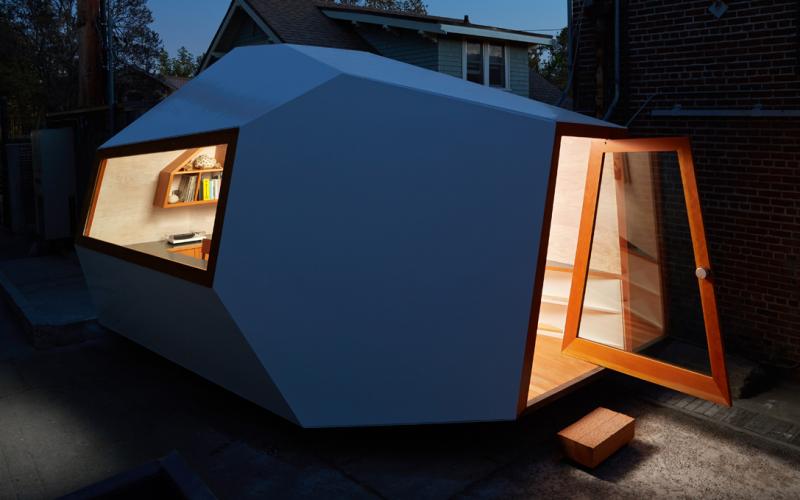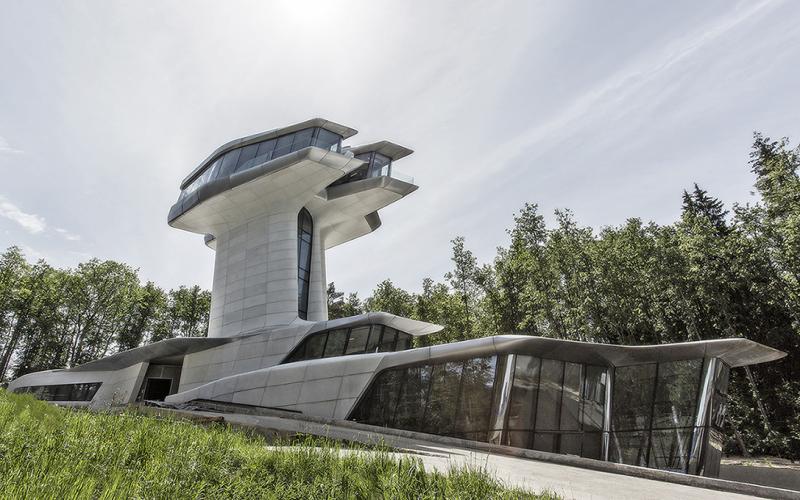Blog / design
It’s hard for a home to stand out among Norway’s scenic wildlands, but one Oslo-based architecture firm has found success where many others have failed. The Mountaintop Cottage by Arkitektvaerelset is a thought-provoking cabin built within the constraints of the country’s strict housing guidelines — and amidst such a challenging opponent, the dwelling has emerged more beautiful than ever.
The cottage is located some 1,125-meters above sea level, adorning a secluded mountaintop that faces staunch weather and violent winds, causing designs and materials to be confined within a set of unrelenting regulations. While Arkitektvaerelset had a daunting project set before them, the talented architects created the serene structure with a beautiful wood facade, adorned by a 22-27 degree slanted ore pine roof. A mesmerizing collection of angular lines and proportionate panels mark the exterior of the home’s porch area, while panoramic divider windows dress the space in warm, natural light. The dwelling can accommodate up to 12 people, with an additional “attic” area that can house up to eight more — all thanks to a master bedroom, bathroom, and sauna that transition seamlessly between a space for rest and a guest sleeping area.
winter2019 Mountaintop Cottage By Arkitektvaerelset blog Design architecture camponogaraboys studiocamponogara
CRvM from Pay a Visit on Vimeo.
Artist Christian Rex van Minnen reflects on the introspective and cyclical nature of his creative process.
christianrexvanminnen.com
Christian Rex van Minnen crvm painting blog nature Design camponogaraboys studiocamponogara art
The Dutch countryside plays host to a magnanimous landscape, allowing architecture firms to optimize and construct the perfect, functional abode for their clients. Despite this, strict zoning regulations often inhibit ambitious builders. While the foundation for Powerhouse Company’s latest home might have proven troublesome, the company has found significant success through its beautifully tailored exception to the rule, Villa 1.
Villa 1 was built entirely upon paradox — a home that straddles the line between a modernized living space and a rustic principle while retaining all of the characteristic qualities of an aging farm estate. To create the immaculate dwelling, Powerhouse was relegated to an archaic way of thinking. Strict zoning guidelines that outline a three-meter build height were found to inhibit the original design, so instead of going back to the drawing board, the company decided to invert the villa, building half of it underground. Atop rooms carved from soil and earth, the home’s glass facade and angular, Y-shaped traits give way to a central living area, utilizing three different wings that are privy to different purposes. Cooking and dining, study and music, and living and painting areas are isolated within their own areas of the home, giving Villa 1 a truly unique layout, no matter where residents reside.
lifestyle Design nederland powerhouse company villa 1 architecture camponogaraboys
The lighthouse is a micro-building named aptly to reflect its lightweight prefabricated panels that are assembled with attention to minimize environmental impact. Additionally, the asymmetric windows and entryway of the small office space provide ample natural light in the daytime while projecting a warm and inviting glow after sundown. The unique structure rests on industrial casters made to support roll-off dumpsters, allowing for ample flexibility in the space this structure occupies. The designers of the Lighthouse ignored traditional building techniques and philosophies to create something totally new from the ground up — clearly seen from a door with no right angles to a skylight that marries age-old boatbuilding with details they borrowed from a car’s sunroof.
Los Angeles-based designers Kagan Taylor and Justin Rice hope to inspire similar structures into becoming “beacons for those searching for smaller sustainable buildings that embrace contemporary architectural design.”
california wood fabrics lighthouse office los angeles architecture camponogaraboys design studiocamponogara
Sometimes we just need to be alone, clear our minds from all the static of the everyday grind and escape the world. What better place is there to experience that tranquility than your home? The yearning for that feeling of harmony is what led Vladislav Doronin, CEO of the OKO Group, an international real estate development firm, to work with the late Zaha Hadid to design his private residence.
The Capital Hill Residence, located in the Barvihka Forest near Moscow, looks like a peaceful escape for the likes of James Bond. Towering the trees surrounding it, this extraordinary home features Zaha’s signature organic intricacy, as well as a complexity of spatial arrangement that feels serene. The residence is divided into two sections: one merging with the hillside and the other rising above the treetops for spectacular views. Inside, there are entertainment spaces, as well as an indoor swimming pool, fitness center, sauna and hammam. This beautiful brainchild of Dame Zaha Hadid is the only private residence she designed that was actually completed.
home design zaha hadid capital hill camponogaraboys ARCHITECTURE design style

